Br44
Guest
i found this artical while browsing the internet...... please read
Tank Explosion - April 19, 1999
Aluminium Scuba Tank Concerns - Visual Plus
At Beaver Aquatics we were intimately connected to a catastrophic explosion of an aluminium, 80 cubic foot SCUBA tank. With this in mind, we would like to inform people about the dangerous potential of SCUBA tanks.
Information and links are included about the explosion of an aluminium SCUBA tank at our facility and other explosions, and will explain some of the procedures that have been developed to make us aware of potential problems before they progress to catastrophes.
Bryan Erickson's Account (April 1999)
What has happened in the last week?????
My week starts on Monday (April 19), arriving at the store late ( hey, I'm the Boss). Kevin Bates, (my right hand), isn't feeling very well, so after harrassing him, I send him home. A customer comes in complaining about his dive computer. As I am dealing with him, another fellow comes in with a tank for fill. Hydro date checked (05/98), VIP checked (05/98). I take the tank into the back and attach the fill whip, check the pressure regulator and turn it down (3000) as H/P steels were being filled before that (3500).
I turn on the airbanks and go back to the front of the store to look after my customers while it fills. We had a flow restrictor put in by Aqua Tech West in the fall, so the fill process is somewhere around 3-5 minutes, depending on how much air is in the tank when it arrives. After 1-2 minutes the cylinder explodes into 3 different pieces, (guesstimate on pressure 2200PSI) the valve (not one of the pieces) is still attached to the fill whip.
Later that day we check the burst disc which, of course, is intact. The cylinder was manufactured by Luxfer 9/74. By the appearance of the cylinder it was in very good condition. No corrosion around the neck area, no dents, hardly even a scratch on the original paint and decals (USD). After the explosion the pieces were recovered and the interior was examined. NO pits, it looks perfect, the slight discolourization on both sides of the threads leads me to believe neck cracks.
This account tells the immediate story concerning the explosion. The subsequent story would include dealing with government agencies, insurance companies and investigators for the next 12 months looking for answers. What was frustrating on our part was the lack of knowledge about the concerns for older aluminum scuba tanks. Damages ended up to be in the $20,000 CAD range. We were extremely lucky that we were only dealing with damages and not injuries or death. The investigation did come to the conclusion that sustained load cracking was responsible for the cracking.
After surviving this incident we have developed strong feelings about the need for all tests on Scuba tanks including Visual Plus (eddy current detection). We have experienced the potential that these tanks do contain. No one else has to experience this same devastating situation if these tests are being done by everyone. Please keep your Hydrostatic test and your Visual Plus inspections up to date so you don't have to experience a SCUBA tank explosion.
after reading that i had a bad realization and checked my dads old tanks(that he still uses)
guess
(if you guessed Luxfer 1974 then your right)
should i get hin new tanks?
i hear that steel 100's are really good quality
Tank Explosion - April 19, 1999
Aluminium Scuba Tank Concerns - Visual Plus
At Beaver Aquatics we were intimately connected to a catastrophic explosion of an aluminium, 80 cubic foot SCUBA tank. With this in mind, we would like to inform people about the dangerous potential of SCUBA tanks.
Information and links are included about the explosion of an aluminium SCUBA tank at our facility and other explosions, and will explain some of the procedures that have been developed to make us aware of potential problems before they progress to catastrophes.
Bryan Erickson's Account (April 1999)
What has happened in the last week?????
My week starts on Monday (April 19), arriving at the store late ( hey, I'm the Boss). Kevin Bates, (my right hand), isn't feeling very well, so after harrassing him, I send him home. A customer comes in complaining about his dive computer. As I am dealing with him, another fellow comes in with a tank for fill. Hydro date checked (05/98), VIP checked (05/98). I take the tank into the back and attach the fill whip, check the pressure regulator and turn it down (3000) as H/P steels were being filled before that (3500).
I turn on the airbanks and go back to the front of the store to look after my customers while it fills. We had a flow restrictor put in by Aqua Tech West in the fall, so the fill process is somewhere around 3-5 minutes, depending on how much air is in the tank when it arrives. After 1-2 minutes the cylinder explodes into 3 different pieces, (guesstimate on pressure 2200PSI) the valve (not one of the pieces) is still attached to the fill whip.
Later that day we check the burst disc which, of course, is intact. The cylinder was manufactured by Luxfer 9/74. By the appearance of the cylinder it was in very good condition. No corrosion around the neck area, no dents, hardly even a scratch on the original paint and decals (USD). After the explosion the pieces were recovered and the interior was examined. NO pits, it looks perfect, the slight discolourization on both sides of the threads leads me to believe neck cracks.
This account tells the immediate story concerning the explosion. The subsequent story would include dealing with government agencies, insurance companies and investigators for the next 12 months looking for answers. What was frustrating on our part was the lack of knowledge about the concerns for older aluminum scuba tanks. Damages ended up to be in the $20,000 CAD range. We were extremely lucky that we were only dealing with damages and not injuries or death. The investigation did come to the conclusion that sustained load cracking was responsible for the cracking.
After surviving this incident we have developed strong feelings about the need for all tests on Scuba tanks including Visual Plus (eddy current detection). We have experienced the potential that these tanks do contain. No one else has to experience this same devastating situation if these tests are being done by everyone. Please keep your Hydrostatic test and your Visual Plus inspections up to date so you don't have to experience a SCUBA tank explosion.
after reading that i had a bad realization and checked my dads old tanks(that he still uses)
guess
(if you guessed Luxfer 1974 then your right)
should i get hin new tanks?
i hear that steel 100's are really good quality
Attachments
-
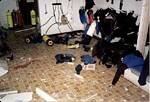 tn_rent.jpg5.3 KB · Views: 182
tn_rent.jpg5.3 KB · Views: 182 -
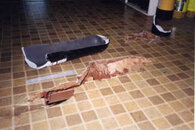 holes.jpg16.6 KB · Views: 93
holes.jpg16.6 KB · Views: 93 -
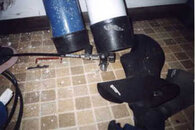 valve.jpg15.9 KB · Views: 91
valve.jpg15.9 KB · Views: 91 -
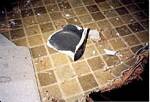 tn_boot.jpg4.7 KB · Views: 91
tn_boot.jpg4.7 KB · Views: 91 -
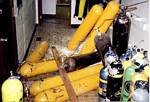 tn_bank.jpg5.5 KB · Views: 122
tn_bank.jpg5.5 KB · Views: 122 -
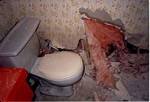 tn_bath.jpg3.7 KB · Views: 105
tn_bath.jpg3.7 KB · Views: 105 -
 tn_under.jpg4.8 KB · Views: 80
tn_under.jpg4.8 KB · Views: 80 -
 tn_wall.jpg3.3 KB · Views: 96
tn_wall.jpg3.3 KB · Views: 96 -
 tn_front.jpg4.3 KB · Views: 120
tn_front.jpg4.3 KB · Views: 120 -
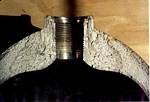 tn_neck.jpg3.7 KB · Views: 99
tn_neck.jpg3.7 KB · Views: 99




